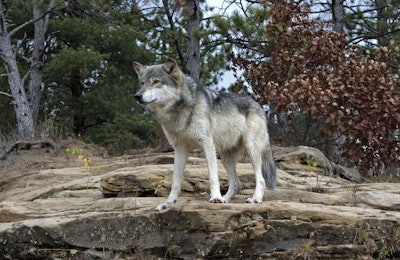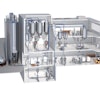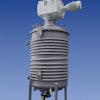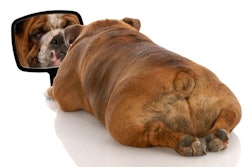
Cat and dog food diets high in animal proteins and fats and low in carbohydrates are called biologically appropriate. This pet food category is growing faster than the pet food market as a whole. However, there is very little published research on whether there are real health benefits of biologically appropriate diets for pets, said Emma Bermingham, PhD, senior research scientist, AgResearch, at Petfood Forum 2017 on April 4 in Kansas City, Missouri, USA.
Biologically appropriate pet food diets can come in a variety of formats, not just raw, she said, and these diets still need to be complete and balanced.
Growth of sales of biologically appropriate pet foods has been fueled by anecdotal reports of health benefits and marketing focusing on the domestication of cats and dogs from their wild ancestors. The fact that neither the Association of American Feed Control Officials (AAFCO) nor the European Pet Food Industry Federation (FEDIAF) stipulate a requirement for carbohydrates may also have had an impact on the growth of high-protein high-fat diets, said Bermingham.

Emma Bermingham, PhD, senior research scientist, AgResearch | Terrence O'Keefe
Evolutionary and genomic evidence
Since there is very little published research on biologically appropriate pet food diets, Bermingham said human and rodent studies have been extrapolated to cats and dogs. Rodents and humans are omnivores, but cats are obligate carnivores, they need animal protein and fats, and the amino acid balance is important. Bermingham said cats also have a low drive to drink water.
Genetically, cats appear to be closer to their wild cousins than do dogs, said Bermingham. Genomic studies have shown differences between domestic cats and wild cats like lions, tigers and leopards in senses, hearing and vision, as well as cognition.
Dogs, on the other hand, are omnivorous carnivores and can eat a wide range of foods to survive. Their ancestors hunted in packs and were competitive feeders after a kill, so they have little control over the amount of food they eat. Dogs are opportunistic scavengers.
Genetically, dogs have cognitive and brain function differences from wolves and other wild dogs. There is also genomic signature in domestic dogs that suggests mutation in starch digesting enzymes, allowing dogs to better digest carbohydrates than their wild ancestors.
Choice testing for cats and dogs
When cats were offered three diets with varying macronutrient profiles, they choose a high-protein, high-fat diet. The total consumption of the three diets by cats, when averaged out, showed that cats preferred protein 50 percent to 52 percent by energy, fat 36 percent to 50 percent by energy, and carbohydrate 2 percent to 12 percent by energy.
In the same type of three-diet-offering study, dogs choose a high-fat, moderate-protein diet. The average result for these tests was a preference for 30 percent to 38 percent protein by energy, 59 percent to 63 percent fat by energy, and 3 percent to 7 percent carbohydrate by energy.
Bermingham said biologically appropriate diets are fitting for cats, but not necessarily for dogs.
Petfood Forum 2018
Petfood Forum 2017 was held April 3-5 in Kansas City, Missouri, USA. Petfood Forum 2018 will take place at the Kansas City Convention Center in Kansas City on April 23-25, 2018.

















